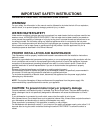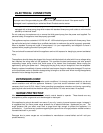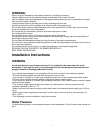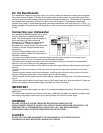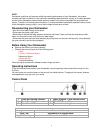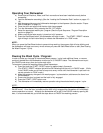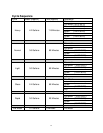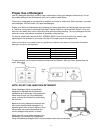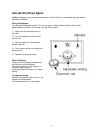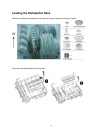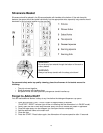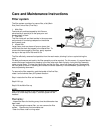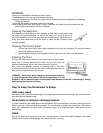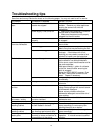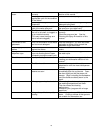
13
Proper Use of Detergent
Use only detergent specifically made for use in dishwashers. Keep your detergent fresh and dry. Do not
put powder detergent into the dispenser until you’re ready to wash dishes.
The amount of detergent to use depends on whether your water is hard or soft. With hard water, you need
extra detergent. With soft water, you need less detergent.
Protect your dishes and dishwasher by contacting your water department and asking how hard your water
is. Twelve or more grains is extremely hard water. A water softener is recommended. Without it, lime can
build up in the water valve, which could stick while open and cause flooding. Too much detergent with soft
water can cause a permanent cloudiness of glassware, called etching.
For heavily soiled loads, use the HEAVY, NORMAL WASH Cycle, fill one or both of the interior cups,
depending on the hardness of your water, and also fill the open cup on the dispenser lid.
Use the information in the table below as a guideline to determine the amount of automatic dishwasher
detergent to place in the dispenser:
Number of Grains
Detergent Cups to Fill
Less than 4
15 cup
4 to 8
25 cup
8 to 12
15 and 25 cups
Greater than 12
15, 25 cups and the open cup
To open the wash cover, press the button and the cover will flip back. After you finish, please close the
cover. See below:
NOTE: DO NOT USE HAND DISH DETERGENT
Using a detergent that is not specifically
designed for dishwashers will cause the
dishwasher to fill with suds. During operation,
these suds will spill out of the dishwasher
vents, covering the kitchen floor and making
the floor wet.
Because so many detergent containers look
alike, store the dishwasher detergent in a
separate space from all other cleaners. Show
anyone who may use the dishwasher the
correct detergent and where it is stored.
While there will be no lasting damage to the
dishwasher, your dishes will not get clean
using a dishwashing detergent that is not formulated to work with dishwashers.



